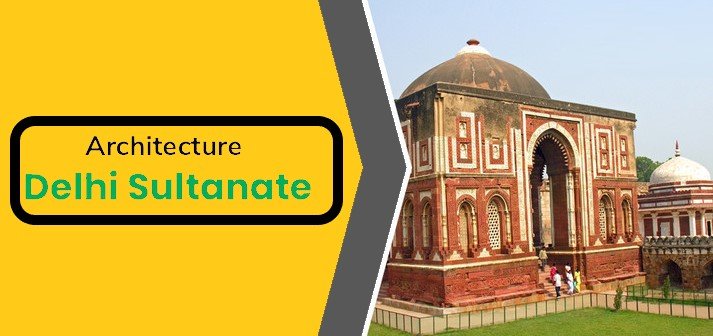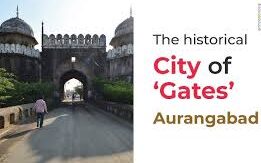Delhi Sultanate Art and Architecture : Delhi Sultanate art and architecture a Brief Overview
India has a rich and diverse history, with many different periods of cultural, social, and political significance. One of the most important of these periods is the Delhi Sultanate, which lasted from the 13th to the 16th century CE. During this time, the sultans of Delhi ruled over a vast empire that encompassed much of northern India. Along with their political and military achievements, the Delhi sultans also left behind a rich legacy of art and architecture that continues to fascinate scholars and historians to this day.
One of the most distinctive features of Delhi Sultanate art and architecture is its fusion of different cultural and artistic traditions. The sultans and their courtiers were drawn from a variety of ethnic and religious backgrounds, including Turks, Persians, and Indians, and this diversity is reflected in the art and architecture of the period. One of the most notable examples of this fusion is the Qutub Minar, a towering minaret that was built by the sultan Qutb-ud-din Aibak in the 12th century CE. The minaret combines elements of Indian and Islamic architectural styles, and is decorated with intricate carvings and inscriptions in Arabic and Sanskrit.
Another important feature of Delhi Sultanate art and architecture is its emphasis on grandeur and monumentality. Many of the buildings and structures from this period are massive in scale, and were designed to impress and awe viewers. This is particularly true of the tombs and mausoleums of the sultans and their families, which often feature elaborate decoration and intricate stonework. One of the most famous of these tombs is the tomb of Ghiyas-ud-din Tughlaq, which is located in the Tughlaqabad Fort complex in Delhi. The tomb is notable for its massive size, its intricate carvings, and its beautiful red sandstone construction.
Despite the grandeur and magnificence of Delhi Sultanate art and architecture, however, there are also many examples of more humble and everyday forms of artistic expression. For example, many of the coins and seals from this period feature beautiful calligraphy and intricate designs, and provide valuable insights into the social and economic conditions of the time. Similarly, the pottery and ceramics of the Delhi Sultanate are notable for their bright colors and intricate patterns, and are often used to study the artistic traditions and cultural practices of the period.
Overall, the art and architecture of the Delhi Sultanate is a fascinating and complex subject that offers valuable insights into the cultural, social, and political history of India. From the grand monuments and tombs of the sultans, to the everyday objects and artifacts of ordinary people, the Delhi Sultanate has left behind a rich and varied legacy of artistic expression that continues to inspire and intrigue scholars and historians today.

Why this News is Important:
The art and architecture of the Delhi Sultanate is an important topic for students preparing for various government exams, including those for positions in the civil service, banking, railways, and defence. The Delhi Sultanate was a critical period in Indian history, and the art and architecture of the period offers valuable insights into the cultural, social, and political history of India. By studying the art and architecture of the Delhi Sultanate, students can gain a better understanding of the rich and diverse history of India, and develop important analytical and critical thinking skills that will be useful in their future careers.
Historical Context:
The Delhi Sultanate was a period of political and cultural transition in India, marked by the arrival of Islamic rulers from Central Asia. The Sultanate was founded by Qutb-ud-din Aibak, a slave of Muhammad Ghori, who conquered Delhi in 1192 CE. Over the next few centuries, the Delhi Sultanate would expand to encompass much of northern India, and would see the rise and fall of many powerful sultans and dynasties.
The art and architecture of the Delhi Sultanate reflected the diverse cultural and artistic traditions of the period, as well as the political and religious aspirations of the ruling class. Many of the buildings and structures from this period were built to impress and awe viewers, and were designed to reflect the power and prestige of the sultans and their courtiers. At the same time, however, there were also many examples of more humble and everyday forms of artistic expression, such as pottery, calligraphy, and textiles.
Despite the diverse range of artistic traditions and styles in the Delhi Sultanate, there are some common features that unite the art and architecture of the period. These include the fusion of different cultural and artistic traditions, the emphasis on grandeur and monumentality, and the use of intricate decoration and stonework.
Key Takeaways from “Delhi Sultanate Art and Architecture”:
| Serial Number | Key Takeaway |
|---|---|
| 1. | The Delhi Sultanate was a period of political and cultural transition in India, marked by the arrival of Islamic rulers from Central Asia. |
| 2. | The art and architecture of the Delhi Sultanate reflects the diverse cultural and artistic traditions of the period, as well as the political and religious aspirations of the ruling class. |
| 3. | Many of the buildings and structures from this period were built to impress and awe viewers, and were designed to reflect the power and prestige of the sultans and their courtiers. |
| 4. | Despite the diverse range of artistic traditions and styles in the Delhi Sultanate, there are some common features that unite the art and architecture of the period, such as the fusion of different cultural and artistic traditions, the emphasis on grandeur and monumentality, and the use of intricate decoration and stonework. |
| 5. | Studying the art and architecture of the Delhi Sultanate can offer valuable insights into the cultural, social, and political history of India, and can help students develop important analytical and critical thinking skills that will be useful in their future careers. |
Important FAQs for Students from this News
Q: What is the Delhi Sultanate?
A: The Delhi Sultanate was a period of Islamic rule in northern India that lasted from the 13th to the 16th century.
Q: What were some of the major achievements of the Delhi Sultanate?
A: The Delhi Sultanate was known for its impressive art and architecture, as well as its military and economic power.
Q: What were some of the major artistic traditions of the Delhi Sultanate?
A: The art and architecture of the Delhi Sultanate reflected a fusion of Islamic, Hindu, and other cultural and artistic traditions.
Q: Why is studying the art and architecture of the Delhi Sultanate important?
A: Studying the art and architecture of the Delhi Sultanate can offer valuable insights into the cultural, social, and political history of India, and can help students develop important analytical and critical thinking skills that will be useful in their future careers.
Some Important Current Affairs Links















